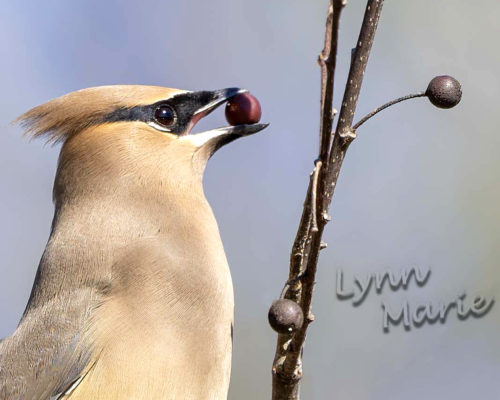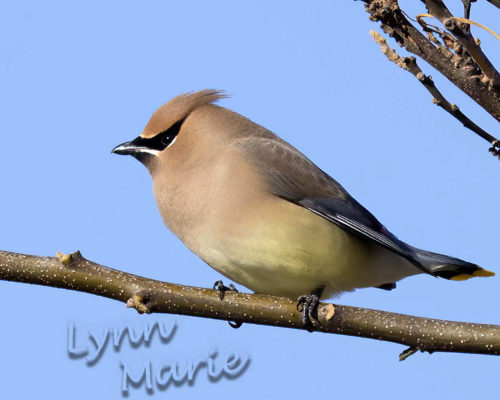The Cedar Waxwing (Bombycilla cedrorum) is a sleek bird with a large head, a short neck, and a short wide bill. They have a crest on top of their head that often lies flat and droops over the back of their head. Their wings are similar to the starling, it is broad and pointed, and their tail is short and square-tipped. They can reach lengths up to 5.5-6.7 inches, with a wingspan of 8.7-11.8 inches. Cedar Waxwings are pale brown on the head and chest fading to soft gray on the wings. The belly is pale yellow, and the tail is gray with a bright yellow tip.
The Cedar Waxwing has an extensive range, which includes all of the U.S., parts of Mexico, and parts of Canada. Florida makes up parts of their non-breeding habitat. They inhabit deciduous, coniferous, and mixed woodlands, particularly areas along streams. They are social birds that form large flocks and often nest in the loose structure of a dozen or so nests. They feed on fruits year-round. The birds’ name derives from their appetite for cedar berries in winter, though they eat a variety of fruits. In summer Cedar Waxwings will supplement their fruit diet with protein-rich insects.
Cedar Waxwings are listed as ‘least concern’ as their population is stable; however, they are vulnerable to window collisions and being struck by cars as the birds feed on fruiting trees along roadsides.


